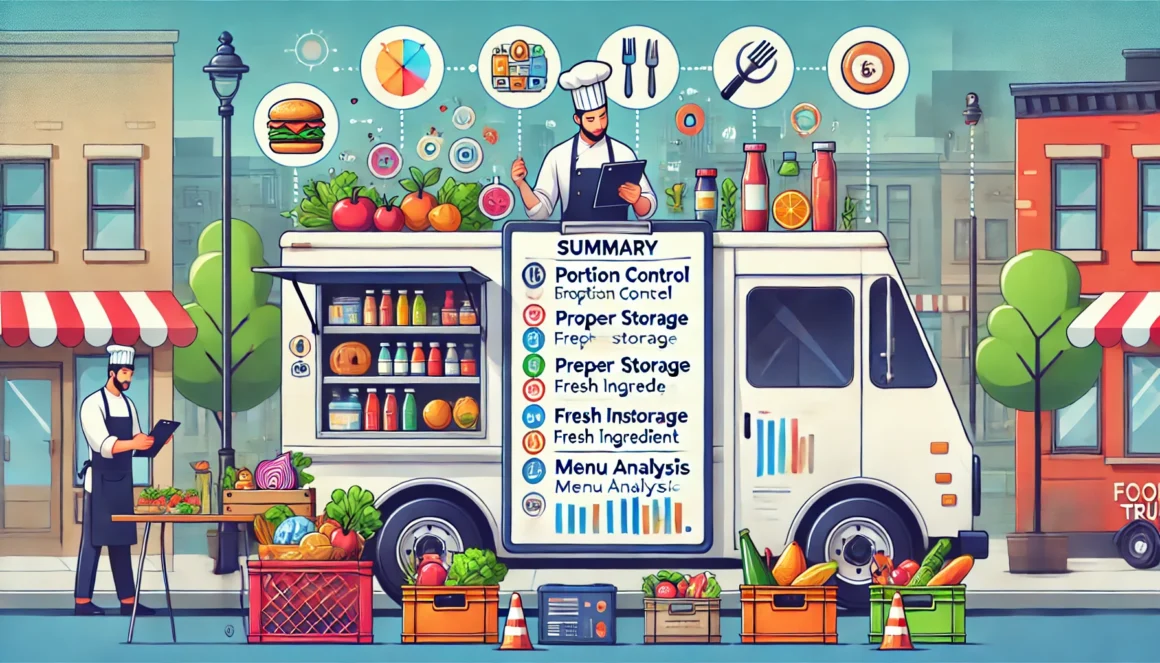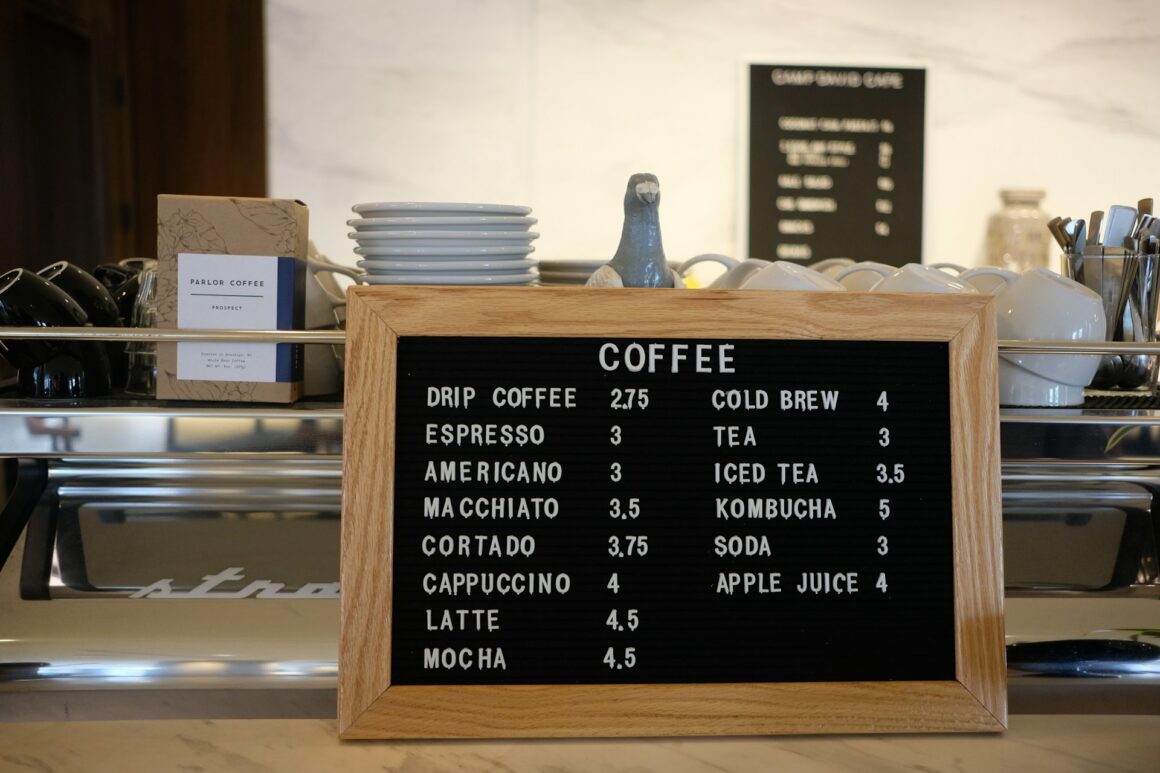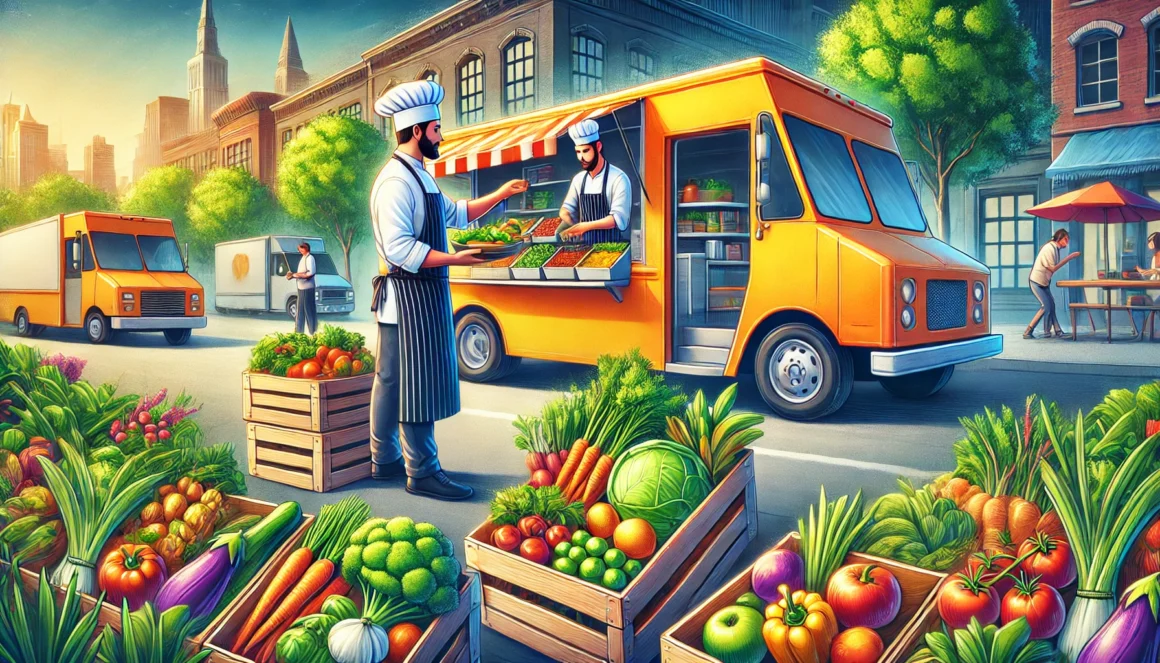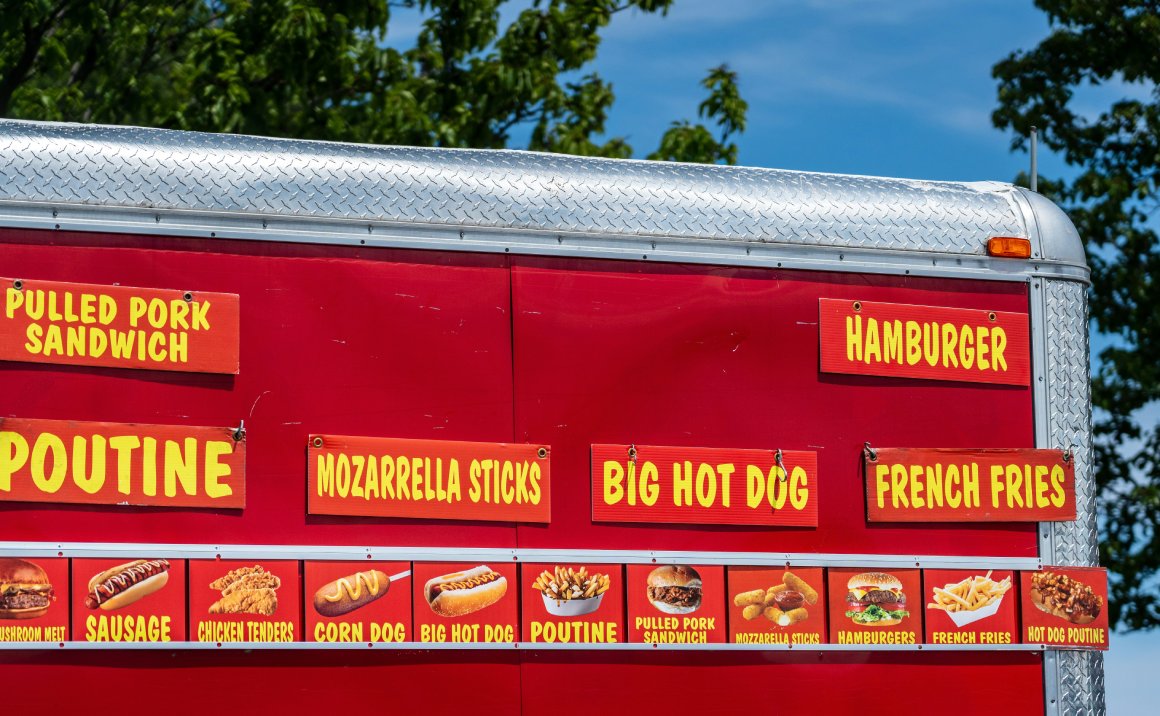
The Pros, Cons, and Investment Levels of Food Trucks, Concession Trailers, Food Carts, and Booth Setups: Which One is Right for You?
This post is part of a regular series. Click here to start at the beginning.
The mobile food industry is booming, with food trucks, concession trailers, food carts, and booth setups popping up at festivals, street corners, and events across the country. Each option offers a different way to deliver food on the go, and each has its own unique benefits and challenges. Whether you’re just starting in the mobile food business or looking to expand, choosing the right setup is crucial to your success.
In this post, we’ll explore the four main types of mobile food operations—food trucks, concession trailers, food carts, and booth setups—and break down the pros, cons, risks, and investment levels involved in each. By the end, you’ll have a clearer understanding of which option best fits your vision, budget, and operational style.
1. Food Trucks: The All-In-One Mobile Kitchen
Food trucks are arguably the most recognizable form of mobile food business. They offer a fully self-contained kitchen, allowing you to cook and serve food directly from the truck. With food trucks, you have the flexibility to move to different locations, serve at events, and reach a wide customer base.
Pros:
- Mobility: Food trucks give you the flexibility to change locations based on demand. You can move between food truck parks, festivals, office parks, and street-side locations to find the best customers.
- Complete Kitchen Setup: Most food trucks are equipped with all the necessary kitchen equipment—grills, fryers, prep stations, refrigeration—allowing you to cook from scratch and serve fresh food on-site.
- Branding Opportunities: Food trucks act as mobile billboards. Their exterior can be fully wrapped with your branding, making them a key part of your marketing strategy.
Example: A BBQ food truck can serve slow-cooked meats and sides directly from its onboard smoker and grill, branding the truck with a rustic, Southern BBQ aesthetic to attract customers.
Cons:
- High Initial Investment: Purchasing and outfitting a food truck with the right equipment can be expensive. Prices typically range from $50,000 to $150,000, depending on the size and customization.
- Maintenance and Repair Costs: Food trucks are not just kitchens—they’re vehicles. This means you’ll have to deal with maintenance and repair costs for both the kitchen equipment and the truck itself. If your truck breaks down, it could mean missed business opportunities.
- Limited Space: While food trucks offer a full kitchen setup, space is limited. You’ll need to design the layout carefully to ensure efficient workflows and avoid bottlenecks during service.
Risks:
- Parking Restrictions and Permits: Many cities have strict regulations about where food trucks can park and operate, which could limit your ability to serve in certain locations. You’ll need to research local regulations carefully to avoid fines or losing prime spots.
- Competition: In popular food truck locations, you may find yourself competing with other trucks offering similar cuisine, which could make it harder to stand out.
Investment Level: $$$
- Total Cost Range: $50,000–$150,000
- Licenses and Permits: Each city requires different permits for food trucks, so research local requirements. This could range from $500 to $2,000 annually, depending on your city.
2. Concession Trailers: A Larger Kitchen with More Flexibility
Concession trailers are mobile kitchens pulled by a vehicle rather than self-contained like food trucks. They typically offer more space for equipment, storage, and prep, making them ideal for businesses that need larger setups or for those who don’t plan to move frequently.
Pros:
- More Space for Cooking and Storage: Trailers can offer significantly more room for kitchen equipment and storage, allowing you to expand your menu or prepare larger quantities of food.
- Lower Maintenance Costs: Since the trailer itself doesn’t have an engine, the maintenance costs are typically lower than a food truck. You only need to worry about the tow vehicle’s maintenance.
- Semi-Permanent Setup: Concession trailers are great for semi-permanent locations like fairs, festivals, or weekly markets. They offer more flexibility for larger operations that don’t need to move daily.
Example: A taco trailer might have multiple prep stations, larger refrigerators, and a grill setup to serve high-volume events like county fairs or music festivals.
Cons:
- Less Mobility: Concession trailers require a tow vehicle to move, which makes them less flexible than food trucks. Setting up and moving can also be time-consuming, which limits your ability to switch locations quickly.
- Parking and Storage: Because of their size, trailers can be more difficult to park and store when not in use. You’ll need a place to store both the trailer and the tow vehicle.
- Setup Time: Unlike food trucks, concession trailers often require additional setup when arriving at a location. You may need to connect power, water, and gas, which adds to the time before you can start serving customers.
Risks:
- Limited Flexibility for Daily Service: Concession trailers are better suited for large events or semi-permanent locations. If your business relies on daily mobility, a trailer may not offer the flexibility you need.
- Tow Vehicle Costs: While the trailer itself may be less expensive than a food truck, you’ll need a reliable tow vehicle, which adds to the overall cost of the operation.
Investment Level: $$–$$$
- Total Cost Range: $30,000–$100,000 (plus tow vehicle)
- Licenses and Permits: Like food trucks, you’ll need the appropriate licenses and permits, including health department certifications and fire safety checks. Costs will vary depending on location.
3. Food Carts: Simple, Low-Cost, and Highly Mobile
Food carts are smaller, more compact versions of mobile food setups. They’re often seen in urban areas where foot traffic is high, and they offer a much more affordable entry point into the food business. Food carts typically serve pre-prepared or simple-to-make items like hot dogs, pretzels, or coffee.
Pros:
- Low Startup Costs: Food carts are the most affordable option for mobile food businesses. With carts costing anywhere from $5,000 to $20,000, this setup is great for entrepreneurs on a budget.
- High Mobility: Food carts are easy to move, allowing you to change locations based on foot traffic and customer demand. They’re perfect for serving in dense urban areas, near parks, office complexes, or college campuses.
- Low Maintenance: With fewer moving parts and simpler setups, food carts require minimal maintenance compared to food trucks or trailers.
Example: A coffee cart set up near a downtown office building serves commuters fresh coffee in the mornings and relocates to a park for lunch service.
Cons:
- Limited Menu Options: Due to the small size and lack of kitchen equipment, food carts typically offer a limited menu of pre-prepared or easy-to-assemble items.
- Weather Dependence: Since most food carts operate outdoors, they’re highly dependent on weather. Rain, snow, or extreme heat can negatively impact sales.
Risks:
- Location Restrictions: Some cities have strict regulations about where food carts can operate, which could limit your ability to find profitable spots. Permits may also be harder to obtain for certain high-traffic areas.
- Low Capacity: Food carts are great for serving small crowds, but they may not be able to handle large events or high-volume service. This can limit your potential revenue compared to food trucks or trailers.
Investment Level: $
- Total Cost Range: $5,000–$20,000
- Licenses and Permits: Permitting costs are generally lower for food carts than for food trucks, but you’ll still need to meet health department regulations and obtain vendor permits.
4. Booth Setups: Great for Events and Markets
Booth setups are temporary, often seen at festivals, farmer’s markets, and special events. Unlike food trucks or trailers, booth setups don’t involve a vehicle or mobile kitchen. Instead, they rely on temporary cooking setups and rented space within event grounds.
Pros:
- Low Startup Costs: Booths are usually the most affordable option for starting a food business. You’ll only need to invest in cooking equipment, display materials, and a tent or booth, rather than a full truck or trailer.
- Flexibility for Special Events: Booth setups are ideal for seasonal or occasional food vendors who only plan to operate at events like fairs, festivals, or pop-up markets.
Example: A booth selling tacos at a summer music festival uses a simple grill and prep station set up under a canopy, making it easy to set up and take down for each event.
Cons:
- Limited Mobility: Booths are only practical for temporary events or markets. They don’t offer the same level of mobility or flexibility as food trucks, trailers, or carts.
- Setup and Breakdown Time: Booth setups require more time for assembly and teardown, which can be labor-intensive. You’ll need to transport your cooking equipment, set up your booth, and connect to power or water supplies.
4. Booth Setups: Great for Events and Markets (Continued)
Risks:
- Event Dependence: Booth setups rely heavily on the success of the event or market you’re attending. If foot traffic is low or the weather is poor, your sales may suffer, and you have little control over the outcome.
- High Competition: Many food vendors operate booths at large events, so you’ll often be competing with other businesses offering similar food items. Standing out in a crowded marketplace can be a challenge.
Investment Level: $
- Total Cost Range: $2,000–$10,000
- Licenses and Permits: Booth setups require temporary food vendor permits, which are often less expensive than full-time mobile vendor permits. However, each event may require specific permits or fees, so it’s important to research the rules for each venue.
5. Pros and Cons Summary
To help you determine the right mobile food setup for your business, here’s a quick breakdown of the pros, cons, and risks associated with food trucks, concession trailers, food carts, and booth setups:
| Type | Pros | Cons | Risks | Investment Level |
| Food Trucks | Fully mobile, complete kitchen setup, great branding opportunities | High initial investment, maintenance costs, limited space | Parking restrictions, competition, breakdowns | $$$ |
| Concession Trailers | Larger kitchen space, lower maintenance, great for semi-permanent setups | Less mobile, requires tow vehicle, setup time | Limited flexibility for daily service, tow vehicle costs | $$–$$$ |
| Food Carts | Low startup costs, highly mobile, easy maintenance | Limited menu options, weather-dependent | Location restrictions, low capacity, weather risks | $ |
| Booth Setups | Low startup costs, flexible for special events | Limited mobility, setup and breakdown time | Event dependence, competition, labor-intensive setup and teardown | $ |
6. Choosing the Right Mobile Food Business for You
When deciding between a food truck, concession trailer, food cart, or booth setup, there are a few key factors to consider:
- Budget: What is your initial investment budget? If you’re working with limited funds, a food cart or booth setup might be the best starting point, with the potential to scale up to a food truck or trailer later. For those with a larger budget, a food truck offers greater flexibility and branding opportunities.
- Menu: What type of food do you plan to serve? If your menu requires a full kitchen setup with grills, fryers, or refrigeration, a food truck or concession trailer is likely the best option. However, if your menu is simple and doesn’t require much cooking on-site, a food cart or booth might suffice.
- Mobility: How often do you plan to move locations? If you want the flexibility to travel to different spots each day, a food truck or food cart is ideal. For those planning to operate in semi-permanent locations, a concession trailer offers more space while still being mobile when needed.
- Operational Schedule: Are you planning to operate full-time or only at seasonal events? Booth setups are perfect for occasional vendors who want to focus on festivals and markets, while food trucks and trailers are better suited for daily operations.
7. Conclusion: Finding Your Perfect Fit in the Mobile Food World
Starting a mobile food business is an exciting venture, but choosing the right setup is critical to your success. Whether you’re drawn to the mobility and visibility of a food truck, the space and stability of a concession trailer, the simplicity of a food cart, or the flexibility of a booth setup, each option has its own unique advantages and challenges.
Ultimately, your decision will depend on your budget, menu, operational needs, and long-term business goals. By carefully weighing the pros and cons of each type of mobile food business and considering the investment level and risks involved, you’ll be better equipped to launch a profitable and sustainable operation.
If you’re still unsure which option is right for you, consider starting small and scaling up as your business grows. And don’t forget to reference the other posts in this series for detailed insights on equipment, payment processing, and food truck design to help you along the way!
This post is part of a regular series. Please use these links to view the rest of the series in order.
How to Manage Food Waste – Summary of Key Strategies
The Complete Guide to Reducing Food Waste in Your Food Truck: A Chef’s Approach Managing…
How to Build an Efficient, Cost-Effective Food Truck Menu
Crafting the Perfect Food Truck Menu: Efficiency, Speed, and Versatility Building a food truck menu…
How to Manage Food Waste – Sourcing Fresher Ingredients
Sourcing Fresh Ingredients to Minimize Food Waste: A Chef’s Guide to Better Ingredients and Lower…




